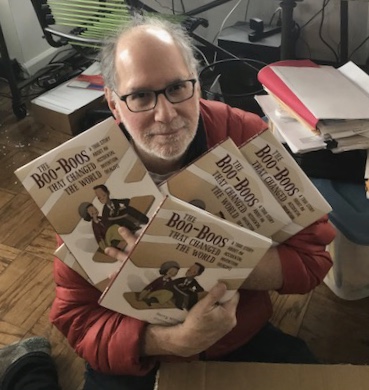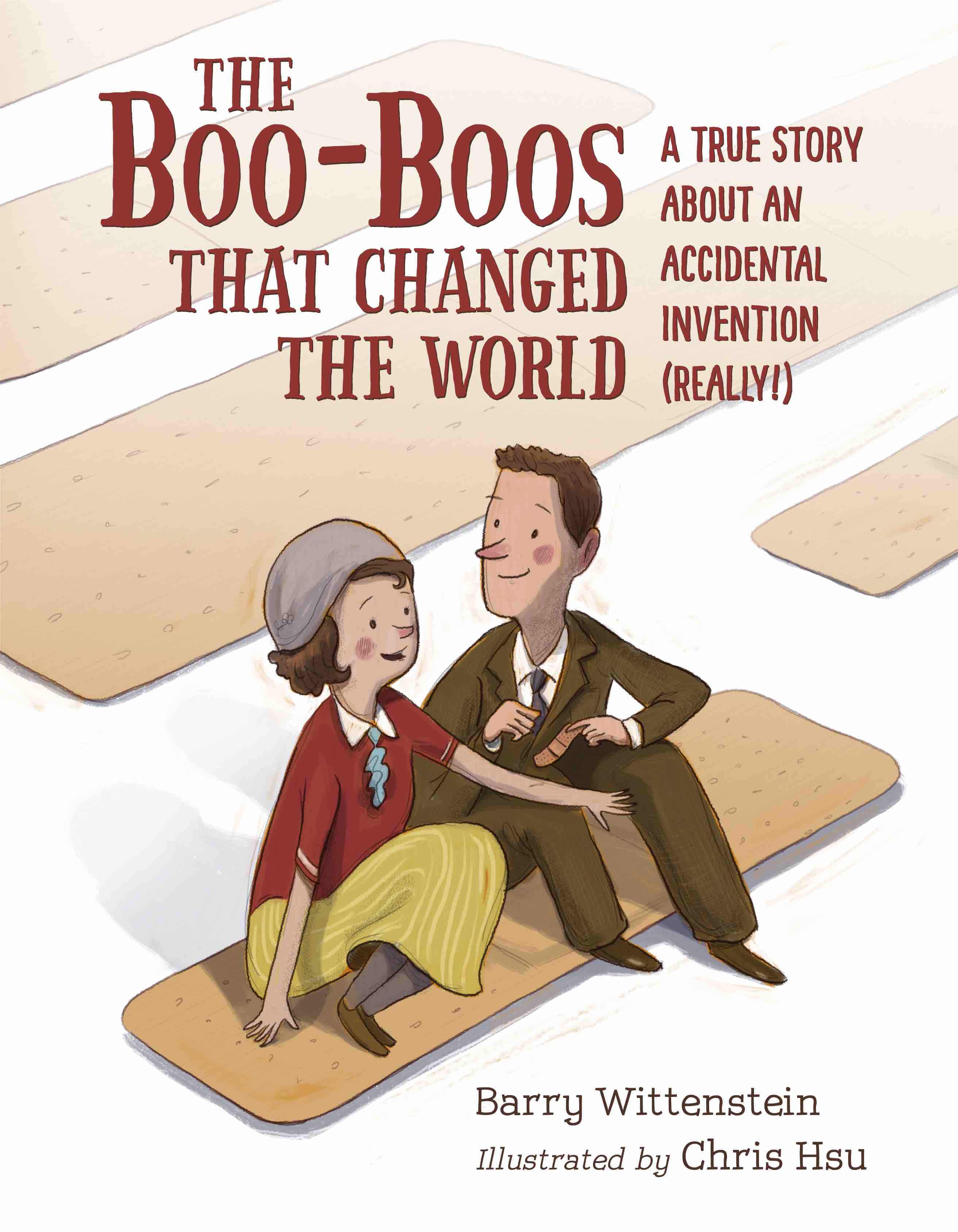 Barry Wittenstein (The Boo-Boos That Changed the World) never set out to become a picture book author. He was raised on the Dick and Jane series during the 1950s. Picture books then were not the same as they are now, and parents didn’t read as much to their kids as they do today. It wasn’t until Barry was in high school and college that he began to really love Beatnik poetry and classics from Hemingway.
Barry Wittenstein (The Boo-Boos That Changed the World) never set out to become a picture book author. He was raised on the Dick and Jane series during the 1950s. Picture books then were not the same as they are now, and parents didn’t read as much to their kids as they do today. It wasn’t until Barry was in high school and college that he began to really love Beatnik poetry and classics from Hemingway.
That all changed when Barry went back to college to earn a Masters in Childhood Education at the age of 57.
“I figured teaching was one of the fields that welcomes career changers and older folks,” Barry told Cracking the Cover. “I took this great class about children’s lit, and was blown away by all the wonderful books I had no idea existed. The only picture book I was familiar with was Where The Wild Things Are.”
As Barry started down the path of writing picture books, he found himself drawn to nonfiction.
“There are so many unknown people in history whose wonderful stories have yet to be told,” Barry said. “Or, if they have been told, they have not yet appeared in children’s literature.
I spent three years as an elementary substitute teacher in New York City’s elementary schools. During that time, I realized that there are unknown or too-little-known stories that absolutely would fit perfectly into today’s curriculum.”
Deciding on a nonfiction topic includes asking yourself a number of questions, Barry said. “One, has a picture book been written about this person or event? If so, has that author or authors written about the same theme or particular event? Then, if both answers are ‘no’, I need to find a way to tailor it to the 4-9 demographic. Not easy sometimes. I am so used to writing for adults, it’s taken a lot of work and practice and advice and feedback.”
 Barry unwittingly began working on The Boo-Boos That Changed the World — which tells the true story behind the invention of the Band-Aid — about 10 years ago. He had made himself a little book with images of Band-Aids that he digitally colored in and tooled around within Photoshop.
Barry unwittingly began working on The Boo-Boos That Changed the World — which tells the true story behind the invention of the Band-Aid — about 10 years ago. He had made himself a little book with images of Band-Aids that he digitally colored in and tooled around within Photoshop.
“At some point, it dawned on me or I remembered that the Band-Aid is often used as a metaphor. Meaning, it’s not a real solution, it’s temporary, and impractical. As in, ‘put a Band-Aid on it.’ It has a negative connotation. I liked the metaphor and thought it was an interesting narrative to include with my pretty pictures.”
Soon, instead of just making pretty pictures of weird looking Band-Aids, Barry was doing some versions of the Band-Aids with political or social statements. Some were lighthearted. Others were not.
“I wanted to find out who the heck invented the thing so I could add a story to my little book. I researched online and learned about Earle and Josephine. I made about six copies and gave them to friends. And forgot about it. Ten years later, now in the picture book business, I re-evaluated the story with fresh eyes. And in reading their story, it struck me as funny that their journey seemed to come to a successful conclusion over and over again. I came up with THE END motif that starts and stops the narrative.”
Barry is currently working on several stories. He does that so he can switch things up when he gets stuck or frustrated.
“Often, I’ll go back to the first one with new eyes,” he said. “Having said that, there’s a story about an African woman who is doctor and humanitarian. That’s nonfiction. I’ve been trying to write that for a few years. Haven’t nailed it yet, but I will. Someday. Another nonfiction piece is a story about the Holocaust. So many ideas. I don’t want to reveal too much about my subjects. It’s a jungle out there!”
